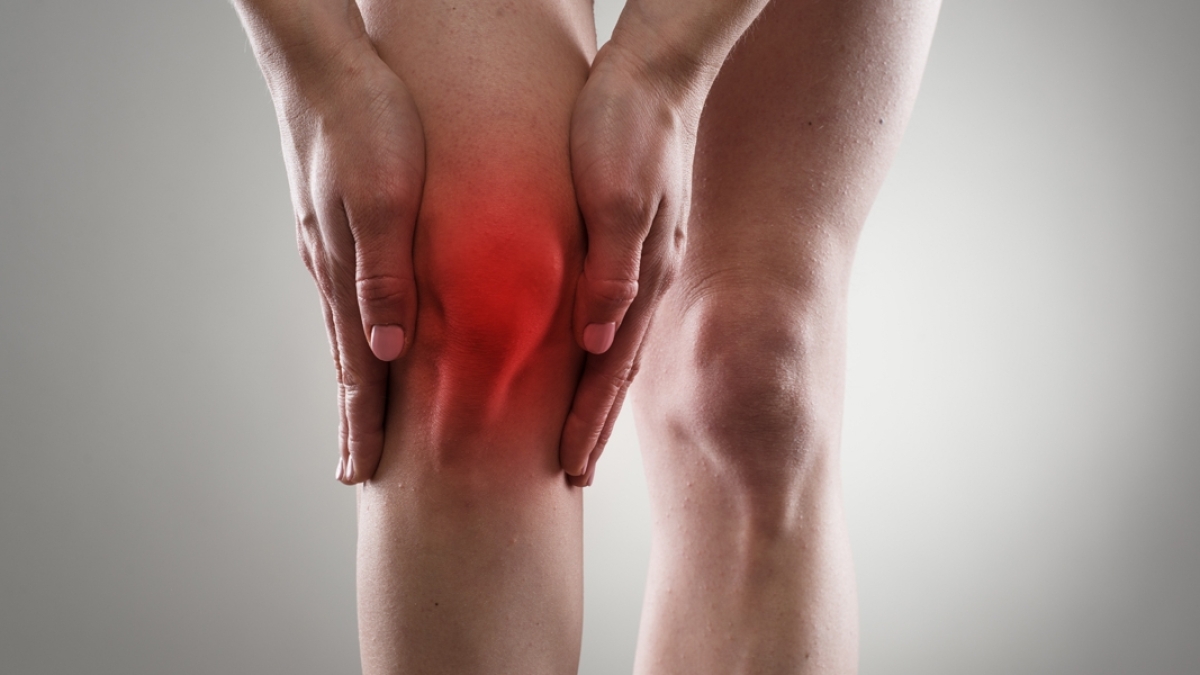What is Early Knee Osteoarthritis and what are its symptoms?
The knee joint is one of the most burdened joints in the human body, as it withstands significant loads during movement and weight-bearing. This continuous strain increases the likelihood of cartilage degeneration and the development of osteoarthritis in the area.
Early knee osteoarthritis refers to the initial stages of this degenerative condition. At this stage, cartilage wear begins progressively, accompanied by mild inflammation and distinct but not extensive structural changes in the joint. Unlike advanced osteoarthritis, where there is significant cartilage loss and joint deformation, the early stage presents milder symptoms and less noticeable damage. The symptoms of early knee osteoarthritis include:
- Mild pain: Occurs mainly after prolonged activity, such as walking or climbing stairs.
- Stiffness: Slight difficulty in fully bending or extending the knee, particularly noticeable after sleep or prolonged inactivity.
- Occasional swelling: Caused by mild inflammation in the joint.
- Joint crepitus: A sensation of grinding, clicking, or friction when moving the knee.
- Difficulty performing movements: Activities that place strain on the knee joint, such as running or deep squatting, may become more challenging.
Since osteoarthritis is in its early stages, symptoms appear periodically and are usually manageable. However, if left untreated, the condition can progress, leading to more severe joint degeneration.
What is an Ultrasound-Guided PRP Injection for Early Knee Osteoarthritis?
Platelet-Rich Plasma (PRP) therapy uses the patient’s own blood to promote tissue healing and regeneration. The procedure involves drawing a small amount of blood, which is then centrifuged to separate the platelet-rich plasma. This plasma is injected into the knee joint, where the platelets release growth factors that stimulate tissue repair, reduce inflammation, and support cartilage health.
Ultrasound-guided PRP injections have been shown to be particularly effective in treating early knee osteoarthritis by:
- Promoting cartilage repair: The growth factors in PRP promote chondrocyte regeneration, aiding in the restoration of damaged cartilage.
- Reducing inflammation and pain: PRP acts as a natural anti-inflammatory agent, alleviating inflammation.
- Slowing disease progression: Due to its regenerative properties, PRP can help delay the transition to more advanced osteoarthritis stages.
What is an Ultrasound-Guided Hyaluronic Acid Injection for Early Knee Osteoarthritis?
Hyaluronic acid is a natural component of synovial fluid that helps lubricate the joint and absorb shock. In osteoarthritis, the amount of hyaluronic acid in the joint decreases, affecting its function. An ultrasound-guided hyaluronic acid injection helps replenish this deficiency and provides the following therapeutic benefits:
- Restores joint lubrication: Replenishing hyaluronic acid levels helps restore normal joint lubrication.
- Enhances shock absorption: Hyaluronic acid protects cartilage from further wear by reducing pressure on the joint.
- Improves mobility: The treatment enhances knee function, allowing patients to move more comfortably.
- Slows disease progression: Similar to PRP, hyaluronic acid injections help slow cartilage degeneration.
What is the Role of Ultrasound Guidance in Injectable Treatments for Early Knee Osteoarthritis?
Ultrasound guidance is essential for any intra-articular injection, as "blind" (non-ultrasound-guided) needle placement carries the risk of injuring surrounding tissues and failing to deliver the medication. Ultrasound allows a specialized radiologist to monitor the needle's placement in real time within the joint, ensuring that the injection is performed with accuracy and safety. This optimizes the treatment’s therapeutic benefits and minimizes the risk of complications.
Which patients can benefit from Ultrasound-Guided PRP-Hyaluronic Acid Injections?
PRP-hyaluronic acid injections are suitable for patients with early knee osteoarthritis who experience mild to moderate pain and functional limitations. Since these treatments are minimally invasive, they are an ideal option for individuals seeking to avoid or delay surgery.
Like all ultrasound-guided musculoskeletal treatments, knee osteoarthritis injections are performed under local anesthesia and are well tolerated by patients. The procedure lasts approximately 30 minutes for a hyaluronic acid injection and 45 minutes for a PRP injection. Most patients can resume their daily activities on the same day.




